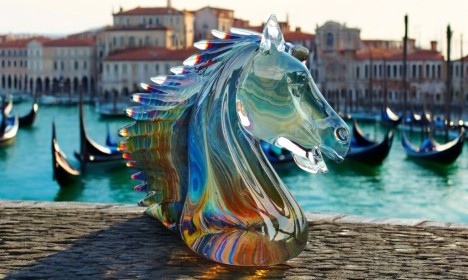Behind the Scenes: The Murano Glass Making Process

Discover the secret behind the prestigious Murano Glass: a tradition of artisanal excellence that blends history, art and science.
The island of Murano, located in the Venetian lagoon, is renowned throughout the world for its centuries-old tradition of glassmaking. A legacy that has been passed down for generations, Murano Glass is synonymous with excellence and craftsmanship. This art, originating in the Middle Ages, has not only stood the test of time but continues to evolve, keeping alive a rich history of innovation and creativity.
The fame of Murano glass comes from the extraordinary skill of its master glassmakers, who with dedication and passion have been able to create works of unparalleled beauty. Each piece is unique, the result of refined techniques and jealously guarded secrets, which give each creation a distinctive and unmistakable character.
At the heart of Murano glassmaking beats the talent and dedication of the Master Glassmakers, true custodians of a heritage of knowledge handed down through the centuries. These craftsmen, who reach the title of Master only after years of apprenticeship and practice, embody the soul of the glassmaking tradition, blending manual skill, scientific knowledge and artistic sensitivity.
The training of a Glass Master begins at a young age, in a journey that combines theoretical teachings and direct practice. It is a long and demanding journey, which requires patience, precision and, above all, passion.
The transmission of knowledge takes place in the furnace, where young apprentices observe and assist the Masters, learning the secrets of the trade through direct experience. Each Glass Master brings with them not only traditional techniques but also their own personal touch, an invisible signature that makes each creation distinctive.
Creation Process: From Art to Science
The transformation of simple materials into glass works of art begins with a process that is as ancient as it is fascinating. The journey from sand to glass requires not only artistic skill but also a deep understanding of the chemical reactions that occur at extreme temperatures.
Selection of Materials
The first step in the process of creating Murano Glass is the careful selection of materials. The basis of every Murano glass is silica sand, which is melted at temperatures above 1,400°C. To this are added various metal oxides, which are responsible for the wide range of vivid colors that characterize Murano glass.
Composition of Glass
The chemical composition of Murano glass is a delicate balance between different components. In addition to silica sand, soda, lime and other elements are added that influence the transparency, strength and workability of the glass.
Colors in Murano Glass
The magic of colors in Murano glass is the result of the addition of specific metal oxides during the melting process. Each oxide gives a distinct color: cobalt for blue, manganese for purple, gold for ruby red, and so on. This alchemy of elements creates the palette of colors for which Murano glass is famous throughout the world.
Magic of Fire: Fusion
The fusion phase is where science meets art. In large gas-fired furnaces, the materials are melted together until they become a homogeneous and malleable mass. The temperature and duration of the fusion are critical variables that the Glass Master manages with millimetric precision, determining the final quality of the glass.
Blowing Techniques
Blowing techniques are essential in the processing of Murano glass. Using a long cannon, the Master delicately blows into the molten glass mass, shaping it with the help of specific tools until the desired shape is achieved.
Modeling and Cooling
After blowing, the glass goes through more detailed modeling stages, where it is further worked to define its shape and details. Finally, slow and controlled cooling (or tempering) ensures that the glass acquires strength and stability, avoiding the formation of internal stresses.
Secrets of the Glass Masters
The mastery of the Murano Glass Masters lies not only in their technical ability but also in their profound knowledge of the secrets passed down from generation to generation. These secrets, jealously guarded, are what give Murano glass its unparalleled charm and quality.
Tools of the Trade
The tools used by master glassmakers are, for the most part, the same as they have been for hundreds of years: glass blowing rods, pliers, scissors, and modeling irons. The mastery in their use is the result of years of experience and practice. Despite the simplicity







Comments
No comment at this time!
Leave your comment